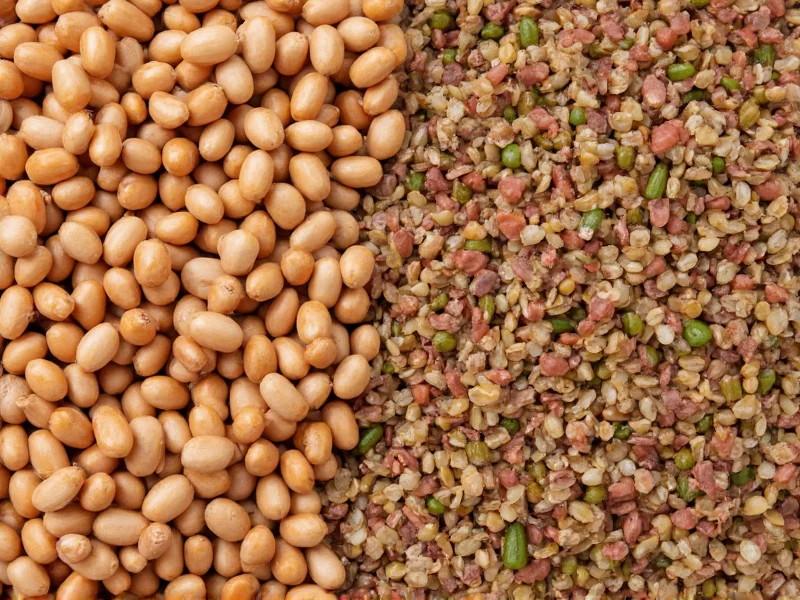Understanding Legume Nutrition: Beans Versus Lentils
When exploring plant-based protein sources, beans and lentils consistently rank among the most nutritious options available. These legumes form the foundation of diets worldwide, particularly in Mediterranean, Indian, and Latin American cuisines. Understanding the nutritional differences between beans and lentils helps optimize their inclusion in balanced meal planning.
Nutritional Profile Comparison
Both legumes deliver impressive nutritional value, but with some key distinctions that affect their dietary applications. The protein content in different types of beans ranges from 13-15 grams per cooked cup, while lentils provide approximately 18 grams per cooked cup. This makes lentils particularly valuable for vegetarians seeking complete protein sources.
| Nutrient (per cooked cup) | Black Beans | Chickpeas | Brown Lentils | Red Lentils |
|---|---|---|---|---|
| Calories | 227 | 269 | 230 | 230 |
| Protein | 15g | 15g | 18g | 18g |
| Fiber | 15g | 12g | 15g | 15g |
| Iron | 20% DV | 15% DV | 37% DV | 35% DV |
| Folate | 64% DV | 71% DV | 90% DV | 90% DV |
Health Benefits of Regular Legume Consumption
Research consistently demonstrates the health benefits of eating lentils daily and incorporating various beans into regular meal patterns. The high soluble fiber content in both legumes helps regulate blood sugar levels, making them valuable for diabetes management. Studies show that consuming legumes at least four times weekly correlates with a 22% lower risk of coronary heart disease.
The digestive benefits of legumes stem from their unique fiber composition, which feeds beneficial gut bacteria while promoting regular bowel movements. Lentils particularly shine with their high folate content, crucial for cellular function and especially important during pregnancy. Beans offer exceptional iron content, vital for oxygen transport in the bloodstream.
Practical Cooking Guidance
Understanding proper preparation techniques maximizes both nutrition and enjoyment. For those wondering how to cook dried beans without soaking, modern pressure cookers provide an excellent solution, reducing cooking time by 65-75% compared to traditional methods. Lentils require no presoaking, making them ideal for quick meals.
When selecting varieties, consider your culinary goals. Best lentils for soups and stews include brown or green varieties, which maintain their shape during cooking. Red and yellow lentils break down easily, creating perfect creamy textures for dals and purees. For bean applications, kidney beans work well in chili, while black beans excel in Latin American dishes.
Addressing Common Concerns
Many people experience digestive discomfort when increasing legume intake. The reducing gas from beans and lentils process involves gradual introduction into your diet, thorough rinsing of canned varieties, and proper cooking techniques. Adding kombu seaweed during cooking or using the enzyme supplement alpha-galactosidase can significantly improve tolerance.
Concerns about anti-nutrients like phytic acid are often overstated. While present in legumes, these compounds also offer antioxidant benefits. Proper soaking, sprouting, or cooking reduces phytic acid content while preserving nutritional value. The overall health benefits of legume consumption far outweigh potential concerns for most individuals.
Sustainable Dietary Choice
From an environmental perspective, both beans and lentils represent sustainable protein options for vegetarians and omnivores alike. Legumes require significantly less water and produce fewer greenhouse gases compared to animal protein sources. Their nitrogen-fixing properties improve soil health, reducing the need for synthetic fertilizers in agricultural systems.
Practical Incorporation Strategies
Integrating these nutritional powerhouses into daily meals doesn't require dramatic changes. Start by substituting half the ground meat in recipes with cooked lentils or mashed beans. Add white beans to smoothies for extra protein without altering flavor significantly. Keep cooked lentils in the refrigerator for quick additions to salads, soups, and grain bowls throughout the week.
Conclusion
Whether you choose beans, lentils, or both, these legumes offer exceptional nutritional value with versatile culinary applications. Understanding their comparing fiber content in beans vs lentils and other nutritional differences allows for strategic meal planning that supports long-term health goals. Their affordability, shelf stability, and environmental benefits make them valuable components of sustainable eating patterns worldwide.
Frequently Asked Questions
What's the main difference between beans and lentils?
Beans are typically larger with a harder outer shell requiring longer cooking times, often needing presoaking. Lentils are smaller, lens-shaped pulses that cook faster without presoaking. Nutritionally, lentils generally contain slightly more protein and iron per serving than most bean varieties.
Which has more fiber, beans or lentils?
Most beans and lentils contain similar fiber amounts (about 15g per cooked cup), though specific varieties differ. Black beans and lima beans have slightly higher fiber content than average lentils, while chickpeas contain somewhat less fiber than most lentil varieties.
Do I need to soak lentils before cooking?
No, unlike most beans, lentils don't require presoaking. They cook relatively quickly (15-45 minutes depending on variety) and can be prepared directly from dry. Soaking lentils isn't necessary and may actually cause them to become mushy during cooking.
How can I reduce gas from eating beans and lentils?
Gradually increase your intake to allow your digestive system to adapt. Rinse canned beans thoroughly, and when cooking dried varieties, change the soaking water once. Adding kombu seaweed during cooking or using an enzyme supplement like alpha-galactosidase can significantly improve tolerance.
Are canned beans as nutritious as dried beans?
Yes, canned beans retain most of their nutritional value. While there may be slight reductions in certain water-soluble vitamins, the protein, fiber, and mineral content remains largely intact. Just be sure to rinse canned beans thoroughly to reduce sodium content by up to 40%.











 浙公网安备
33010002000092号
浙公网安备
33010002000092号 浙B2-20120091-4
浙B2-20120091-4